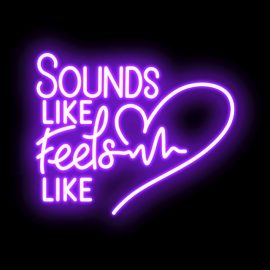To celebrate Black history month, let’s take a dive into past and present Black composers whose art is powerful, breathtaking, and food for the soul.
Curating this playlist and discovering the magnificent beauty in this music has been one of the best things I’ve done all week. With the help of my university professor (many thanks Professor Lister!), I discovered music I can’t believe I’ve lived without. I was also surprised to learn I’ve met some of the composers when they came to give talks at my university. They were inspiring and of course their music is equally inspiring.
I’ve taken this week to curate a playlist of music by a handful, but not exhaustive, list of Black composers whose music I think is riveting and compelling. Each of the composers in this article have such an extensive repertoire behind them, and I’m just giving you a taste of their music. I hope this short intro into their music inspires you to learn more about their music and the beauty within. So, without further ado, let’s dive right in!
The first piece is absolute heaven—literally, William Grant Still’s Summerland is a musical depiction of paradise. This piece is part of a larger work called Three Visions (1935) and tells the journey of a human soul after death. In the proceeding movement, Dark Horseman, energetic and anxious ostinatos are replaced by soaring and surreal melody in Summerland. Listening to this piece, I felt a sense of calmness, comfort, and serenity; fitting feelings for a depiction of heaven.

This piece really speaks to my life right now. As a college student under a barrage of homework and my own dreams, this piece gave me moments of peace from it all, reminding me of the power and depth of music.
The next piece I want to talk about is Source Code (2013) by Jessie Montgomery. I had the opportunity to listen to this piece live with the Juventas New Music Ensemble, and after the concert I was instantly in love. Both my girlfriend and I remarked it was one of our favorite pieces on the program. Montgomery’s program note is so eloquent I thought I’d share it here with you. Montgomery writes:
“The first sketches of Source Code began as transcriptions of various sources from African American artists prominent during the peak of the Civil Rights era in the United States. I experimented by re-interpreting gestures, sentences, and musical syntax (the bare bones of rhythm and inflection) by choreographer Alvin Ailey, poets Langston Hughes and Rita Dove, and the great jazz songstress Ella Fitzgerald into musical sentences and tone paintings. Ultimately, this exercise of listening, re-imagining, and transcribing led me back to the black spiritual as a common musical source across all three genres. The spiritual is a significant part of the DNA of black folk music, and subsequently most (arguably all) American pop music forms that have developed to the present day. This one-movement work is a kind of dirge, which centers on a melody based on syntax derived from black spirituals. The melody is continuous and cycles through like a gene strand with which all other textures play.”
Notation Central

This piece is so evocative of deep emotion, I couldn’t help but be captivated by the long held notes, the melody, and swelling harmony. Suffice to say, you gotta give it a listen as soon as you can!
Now, I want to dive into an amazing combination of music by Anthony Green and Abraham Lincoln’s Gettysburg Address. It’s an awe-inspiring combination of sounds that took me on a journey and revealed so many possibilities. This is work entitled The Gettysburg Address (2010) for voice and ensemble with textures taking center stage. The composer incorporates a wide variety of performance techniques and timbres to create a really diverse world of sound. I absolutely love it. I really enjoyed the piece when I gave it lots of attention and focus. And don’t even get me started on the vocal writing. Literal heart eyes.

While I was listening to recordings of this work, I noticed myself drawing to how Green orchestrates the famous Address and what the implications of it might be in our present day. I’ll save my imaginations to let yours run wild when you listen to this magnificent work.
The next piece I’d like to introduce to you nearly brought tears to my eyes, it was so beautiful. Umoja (2019) by Valerie Coleman is one of those pieces that stays near to your heart like a comforting friend. The title comes from the Swahili word for unity and I think that’s so fitting. The piece is an anthem and I couldn’t help but feel inspired to write music of my own because of it. It also holds historical significance. This piece was the first piece that the Philadelphia Orchestra commissioned from a living African American woman composer. Too many years too late, but nonetheless an important piece and milestone. The program note reads:
In its original form, Umoja, the Swahili word for Unity and the first principle of the African Dispora holiday Kwanzaa, was compose a simple song for women’s choir. It embodied a sense of ‘tribal unity’ through the feel of a drum circle, the sharing of history through traditional “call and response” form and the repetition of a memorable sing-song melody. It was rearranged into woodwind quintet form during the genesis of Coleman’s chamber music ensemble, Imani Winds, with the intent of providing an anthem that celebrated the diverse heritages of the ensemble itself.
Valerie Coleman Website
Again these works of art are not the end-all and be-all. They’re merely a small part of the wonderful repertoire from the aforementioned composers, many of whom are still living and creating today. I encourage you to check out more of their music and find them on social media. Happy listening!
